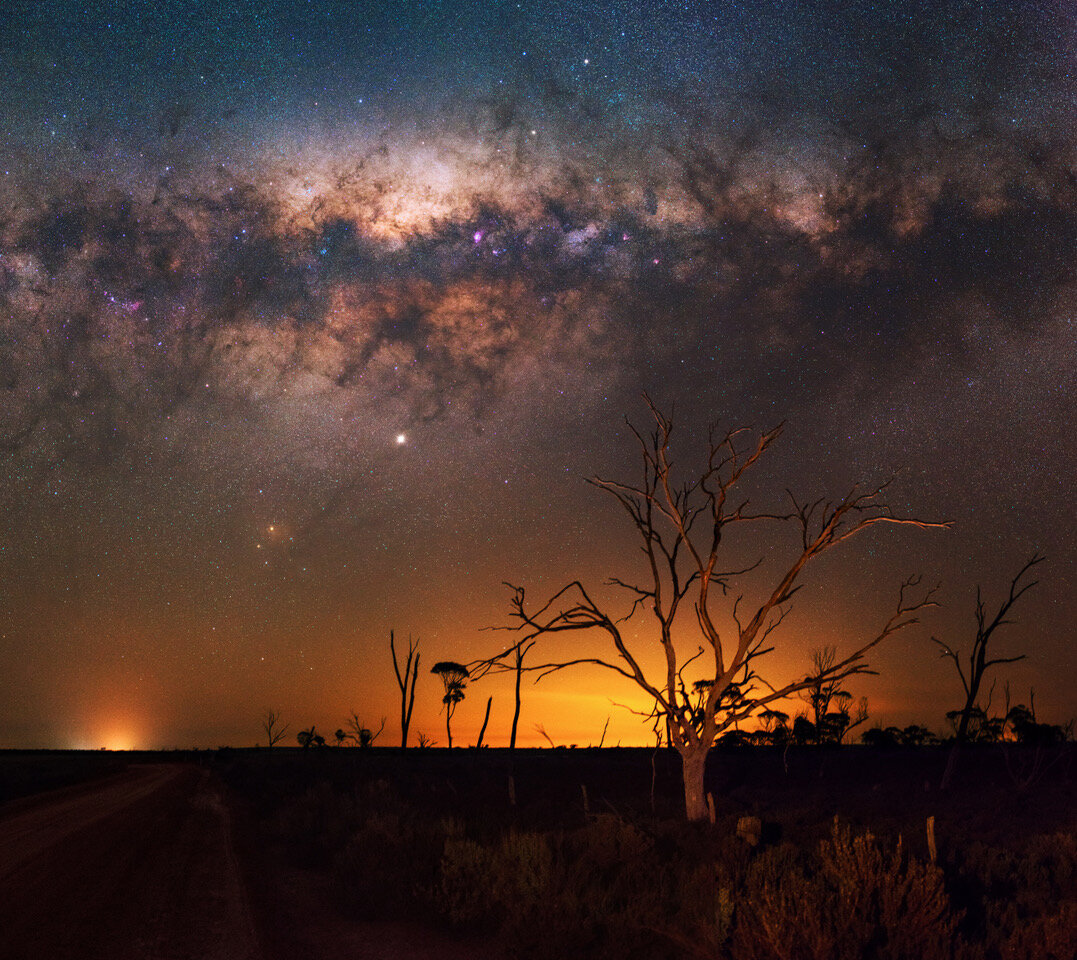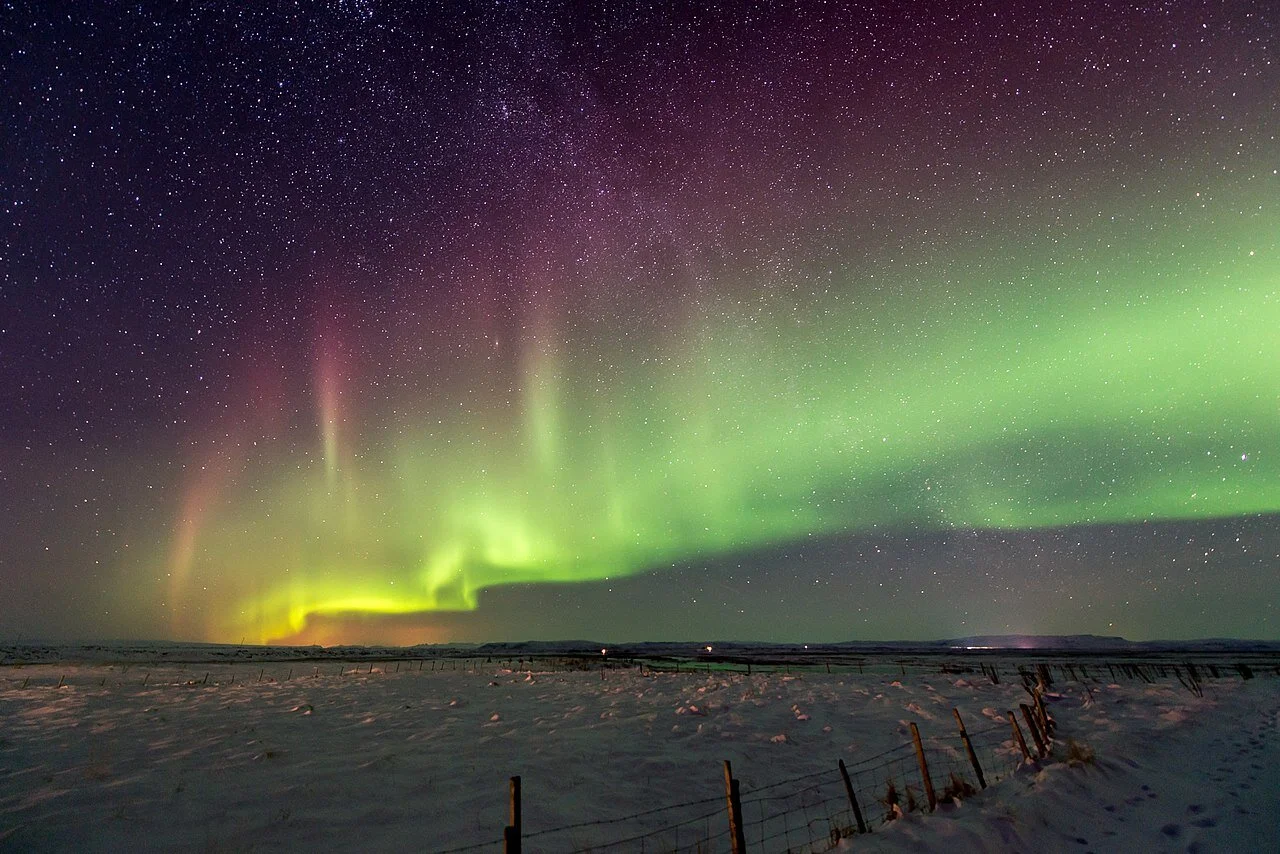Light pollution is inhibiting our ability to see the night sky. These 15 dark sky sanctuaries are some of the world’s most remote and dark places, where the night sky is still perfectly visible.
The star-filled night sky is one of the greatest natural wonders visible to people, but it can be hard to see these days. Light pollution—defined as unwanted or excessive artificial light—has many adverse effects, including disrupting ecosystems, harming human health and contributing to energy waste and the release of millions of tons of carbon dioxide each year. To humans, the most immediately obvious effect of light pollution is the extreme obstruction of the night sky in urban areas, where a view of stars is replaced by a bright haze known as skyglow.
According to the World Atlas of Artificial Night Sky Brightness, a scientific study from 2016, more than 80% of the world’s population lives under skyglow. In the United States and Europe, that number is closer to 99%. For more than one third of humanity, the Milky Way, which our ancestors looked to without interference, is nearly invisible.
In addition to light pollution’s other negative impacts, the loss of the night sky is the loss of a significant part of human culture. One paper points out that many Indigenous traditions worldwide rely on the stars, and another examines the night sky’s great impact on art throughout history.
The increase in light pollution in modern times led to the creation of the International Dark-Sky Association (IDA), an organization that aims to protect the night from light pollution. Since 1988, the IDA has made big strides in publicizing the issue of light pollution. It has recently establised ways to mitigate its impact on the night, including creating dark-sky certified lighting fixtures and founding the International Dark Sky Places (IDSP) Program, which encourages the protection and preservation of dark-sky sites.
The IDSP Program has five designations for dark sky places, with the darkest and most remote being International Dark Sky Sanctuaries. These sanctuaries are public or private lands that have “an exceptional or distinguished quality of starry nights” and a nocturnal environment that merits protection. To become an International Dark Sky Sanctuary, an area must undergo an application process wherein community support for dark sky protection is demonstrated. There are only 15 of these sanctuaries worldwide, and they are some of the last places on Earth with a truly unpolluted view of the night sky.
International Dark Sky Sanctuaries:
1. The Jump-Up, Australia
The Jump-Up, a large mesa plateau in Australia standing nearly 250 feet above the surrounding land, is home to the Australian Age of Dinosaurs Museum. As a result, it was designated a dark sky sanctuary in 2019.
2. !Ae!Hai Kalahari Heritage Park, South Africa
Created in 2002, the !Ae!Hai Kalahari Heritage Park restored nearly 95,000 hectares of land to the indigenous Khomani San and Mier communities in South Africa. The park aims to preserve these communities’ culture and traditions. It was designated a dark sky sanctuary in 2019.
3. Stewart Island/Rakiura National Park, New Zealand
Stewart Island is New Zealand’s third-largest island by land area, but it is home to fewer than 400 people. Most of the island is taken up by Rakiura National Park, the country’s most recently established national park. Rakiura translates to “the Land of Glowing Skies,” and is a wonderful place to see the Southern Lights. It was designated a dark sky sanctuary in 2019.
The Milky Way over Great Barrier Island (Aotea). Copyright Carol Comer.
4. Aotea/Great Barrier Island, New Zealand
New Zealand’s sixth-largest island by land area, Great Barrier Island (Aotea to the indigenous Maori people) houses about 1,000 residents. 60% of the island is a nature reserve, so almost all of the area’s natural darkness has been maintained. It was designated a dark sky sanctuary in 2017.
Stars at Rainbow Bridge National Monument. Copyright Dawn and Brent Davis.
5. Rainbow Bridge National Monument, U.S.
Utah’s Rainbow Bridge National Monument protects one of the world’s largest known natural bridges, formed during the last glacial period. The Ancestral Pueblo people regarded Rainbow Bridge as sacred, and it is still considered a sacred area for modern Paiute and Navajo. Rainbow Bridge is only accessible by a two-hour boat ride or by a 14 mile overland trail, which is why the site remains so naturally dark. It was designated a dark sky sanctuary in 2018.
6. Black Gap Wildlife Management Area, U.S.
Surrounded by swathes of undeveloped ranch land on two sides and Big Bend National Park on the other two sides, Black Gap Wildlife Management Area in west Texas is maintained for wildlife conservation, research and management. The night sky is managed as a natural and cultural resource, just as the wildlife is. Black Gap was designated a dark sky sanctuary in 2021.
The night sky over the Pitcairn Islands. Christopher Pegman for Pitcairn islands tourism.
7. Pitcairn Islands, British Overseas Territory
The Pitcairn Islands is a British Overseas Territory composed of four islands in the South Pacific: Pitcairn, Henderson, Ducie and Oeno. Pitcairn is the only inhabited island, with a population of around 50, mostly descended from the mutineers of the Royal Naval ship, the HMS Bounty, and their Tahitian companions. The islands were designated a dark sky sanctuary in 2019.
8. Boundary Waters Canoe Area Wilderness, U.S.
Spanning over a million acres in northern Minnesota’s Superior National Forest, Boundary Waters Canoe Wilderness Area is one of the US’s most untouched natural wilderness sites. Boundary Waters is uninhabited and free of roads or buildings. Instead it boasts over 1,200 miles of canoe routes throughout over 1,000 lakes and rivers. It was designated a dark sky sanctuary in 2020.
Two people look up at the stars over Niue. Copyright Mark Russell and Niue Tourism.
9. Niue
Niue, an island in the Pacific Ocean thousands of kilometers off the coast of New Zealand, is one of the world’s smallest self-governing states. Niue is believed to have been inhabited for over a thousand years, thought to be settled first during migrations from Samoa. Niue is over 248 miles away from the next nearest inhabited land. It was designated a dark sky sanctuary in 2020.
10. Cosmic Campground, U.S.
Located on National Forest System lands in New Mexico’s Gila National Forest, Cosmic Campground offers unobstructed, 360-degree views of the night sky. The campground’s nearest significant source of artificial light is over 40 miles away, in Arizona. It was designated a dark sky sanctuary in 2016, making it the first in North America.
11. Medicine Rocks State Park, U.S.
Medicine Rocks State Park in Montana is listed on the US National Park System’s National Register of Historic Places. The park is home to stunning sandstone formations and was a gathering place for Native American hunting parties. It was designated a dark sky sanctuary in 2020.
The night sky seen from Devils River State Natural Area. Copyright Dale Blasingame.
12. Devils River State Natural Area, U.S.
Once part of a working ranch, the Devils River State Natural Area in Del Rio, Texas, was purchased in 1988 by the Texas Parks and Wildlife Department. It is surrounded by private ranches and otherwise very remote, and it was designated a dark sky sanctuary in 2019.
Bright stars in the night sky over Massacre Rim. Photo credit: Jonathan Rundell
13. Massacre Rim Wilderness Study Area, U.S.
The Massacre Rim Wilderness Study Area in northwest Nevada is over 150 miles from the nearest large urban areas, Reno, Nevada and Redding, California. There are a few small communities, mostly ranches, in a closer radius, but there is no major light pollution, making Massacre Rim one of the darkest places in the US. It was designated a dark sky sanctuary in 2019.
14. Gabriela Mistral, Chile
Named for the Nobel-prize-winning Chilean poet who spent her childhood in the Elqui Valley, where the sanctuary is located, the Gabriela Mistral Dark Sky Sanctuary was the first International Dark Sky Sanctuary in the world. The site is home to the Associated Universities for Research in Astronomy, which operates professional astronomy facilities in the Elqui Valley. The site was designated a dark sky sanctuary in 2015.
15. Katahdin Woods and Waters National Monument, U.S.
An over 87,000 acre area in northern Maine, Katahdin Woods and Waters National Monument encompasses various landscapes, including mountains, woods and rivers. It was designated a dark sky sanctuary in 2020.
Rachel Lynch
Rachel Lynch is a student at Sarah Lawrence College in Bronxville, NY currently taking a semester off. She plans to study Writing and Child Development. Rachel loves to travel and is inspired by the places she’s been and everywhere she wants to go. She hopes to educate people on social justice issues and the history and culture of travel destinations through her writing.




















